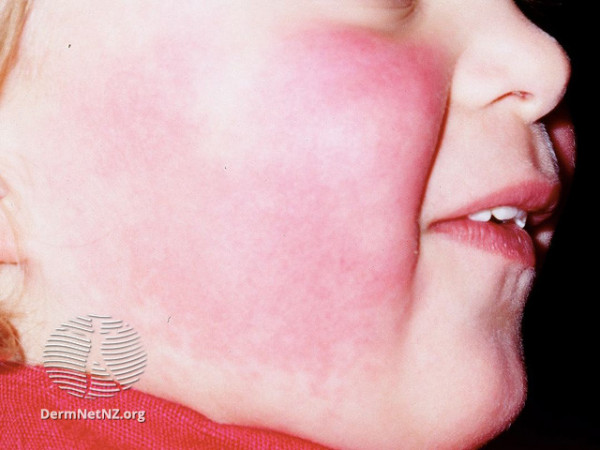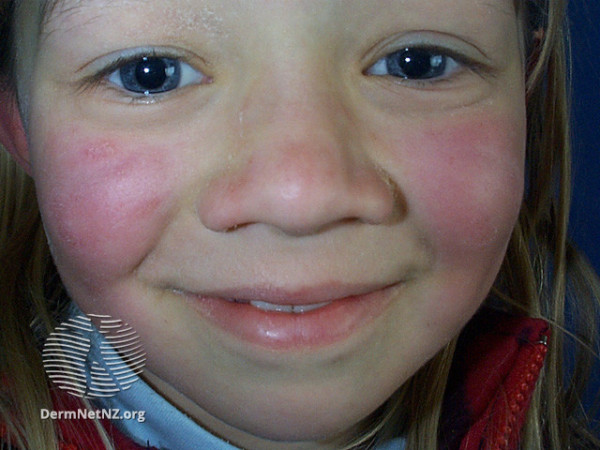Symptoms
Often there are no symptoms, but your child may have some of the symptoms below before the rash appears:
- low-grade fever
- chills
- headache
- body ache
- sore throat
- diarrhoea.
After about three to seven days the early symptoms will improve, and your child may develop:
- a rash on their face, with bright red cheeks that look like a slap mark – which is how the disease got its name
- a rash on the body, arms and legs.

Source: DermNet NZ

Source: DermNet NZ
The rash may be itchy and fade and then flare up again when your child is hot or upset. Once the rash appears your child is no longer infectious and won’t spread the disease to others. Typically, the rash will last for two weeks, but it may last up to six weeks or even months – especially if the skin is exposed to sunlight or after exercise.
Treatment
There’s no cure for slapped check, since it’s caused by a virus, just like the common cold. However, there are a few things you can do to make little one feel better:
- make sure they get lots of rest
- encourage them to drink lots of fluids and offer food if they are hungry
- provide cool flannels for their cheeks if they are feeling uncomfortable
- give your child medication if they are feeling unwell.
When to visit a doctor
For most healthy kids, slapped cheek is mild and will usually improve on its own. However, the illness can be more severe for kids with reduced immunity or blood disorders.
If you are worried about your child or aren't sure what to do, call PlunketLine to speak to a registered nurse.
If you are pregnant
If you are pregnant and have been in close contact with a child with slapped cheek, or your own child has it, contact your doctor or lead maternity carer. In very rare cases, women who contract the virus during the first 20 weeks of pregnancy can pass the disease on to their babies.
Infectious diseases information